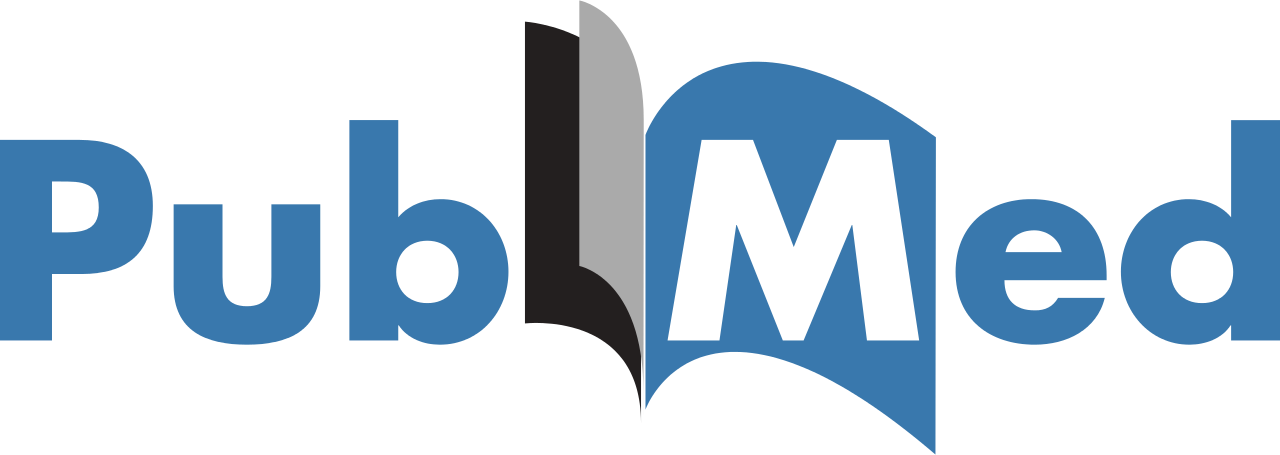Google AdSense をこのブログで使用しているが,米国租税条約が適用されるため,フォーム W-8BEN から免除を申請した.
PowerBIで郵便番号からヒートマップを作成する
とある件で発表の機会があり,その準備に追われている.弊社の顧客マスターから抽出した郵便番号をジオコーディングし,地図上にヒートマップを作成するという作業を行ったので,備忘録として残しておく.
Google Apps Scriptでカレンダーからイベントを抽出する
カレンダーアプリは Google カレンダーに依存している.Google カレンダーから日付とイベント,詳細を抽出する必要が出てきたため,小一時間調べた方法を備忘録として残しておく.
PubMedで筋トレと炭水化物について論文検索してみた
前回に引き続き PubMed による検索.今回のテーマは増量であるが,増量に関しては検索結果は期待できない.
検索式は ((strength training) AND carbohydrate) AND systematic review である.これは詳細検索になる.結果は 31 件.そのうちめぼしい論文は以下の 3 編である.
- Resistance Training Prevents Muscle Loss Induced by Caloric Restriction in Obese Elderly Individuals: A Systematic Review and Meta-Analysis.
- Dietary Intake of Competitive Bodybuilders.
- The effect of exercise on the cardiovascular risk factors constituting the metabolic syndrome: a meta-analysis of controlled trials.
2 本目がそそるのだが,残念ながら有料論文だ.とりあえず要約だけコピペしてくる.
有料論文でも別ルートから全文が入手できる…かも
こういう時でも,諦めずに検索し続けると思わぬところから全文が手に入ったりする.まず試したいのはタイトルでの Google 検索だ.Google Scholar じゃないのか?と思うかも知れないが,通常の検索でよい.
論文特化型の検索だと公式の論文サイトからしか拾ってこないのだが,時々著者が自分のサイトで論文を公開してくれている場合がある. 今回はビンゴ!だった.
ResearchGate というサイトにあった.右上に Download full-text PDF というボタンがあるだろう?これがそうだ.
Dietary Intake of Competitive Bodybuilders.
BACKGROUND:
Competitive bodybuilders are well known for extreme physique traits and extremes in diet and trainingmanipulation to optimize lean mass and achieve a low body fat. Although many of the dietary dogmas in bodybuilding lack scientific scrutiny, a number, including timing and dosing of high biological value proteins across the day, have more recently been confirmed as effective by empirical research studies. A more comprehensive understanding of the dietary intakes of bodybuilders has the potential to uncover other dietary approaches, deserving of scientific investigation, with application to the wider sporting, and potential health contexts, where manipulation of physique traits is desired.
OBJECTIVE:
Our objective was to conduct a systematic review of dietary intake practices of competitive bodybuilders, evaluate the quality and currency of the existing literature, and identify research gaps to inform future studies.
METHODS:
A systematic search of electronic databases was conducted from the earliest record until March 2014. The search combined permutations of the terms ‘bodybuilding’, ‘dietary intake’, and ‘dietary supplement’. Included studies needed to report quantitative data (energy and macronutrients at a minimum) on habitual dietary intake of competitive bodybuilders.
RESULTS:
The 18 manuscripts meeting eligibility criteria reported on 385 participants (n = 62 women). Most studies were published in the 1980-1990s, with three published in the past 5 years. Study methodological quality was evaluated as poor. Energy intake ranged from 10 to 24 MJ/day for men and from 4 to 14 MJ/day for women. Protein intake ranged from 1.9 to 4.3 g/kg for men and from 0.8 to 2.8 g/kg for women. Intake of carbohydrate and fat was <6 g/kg/day and below 30% of energy, respectively. Carbohydrate intakes were below, and protein (in men) intakes were higher than, the current recommendations for strength athletes, with no consideration for exploration of macronutrient quality or distribution over the day. Energy intakes varied over different phases of preparation, typically being highest in the non-competition (>6 months from competition) or immediate post-competition period and lowest during competition preparation (≤6 months from competition) or competition week. The most commonly reported dietary supplements were protein powders/liquids and amino acids. The studies failed to provide details on rationale for different dietary intakes. The contribution of diet supplements was also often not reported. When supplements were reported, intakes of some micronutrients were excessive (~1000% of US Recommended Dietary Allowance) and above the tolerable upper limit.
CONCLUSION:
This review demonstrates that literature describing the dietary intake practices of competitive bodybuilders is dated and often of poor quality. Intake reporting required better specificity and details of the rationale underpinning the use. The review suggests that high-quality contemporary research is needed in this area, with the potential to uncover dietary strategies worthy of scientific exploration.
一つ興味深い記述がある.検索式だ. ‘bodybuilding’, ‘dietary intake’ and ‘dietary supplement’ で検索している.後で同じキーワードを適用してみることにしよう.
おっと,参考文献リストに randomised controlled trial が 2 編あるな.一応リンクを踏んでおこう. なになに,1 件目はチェックリスト作成について.これは直接関係なさそう.2 件目はどうだ?何かリンク先と PDF の内容がずれてる.これは PDF の方が正しい.タイトルは「過食中の体重増加,エネルギー消費量および体組成に及ぼす食餌たんぱく質含量の影響」だ.この論文もチェック対象に昇格させよう.
Effect of Dietary Protein Content on Weight Gain, Energy Expenditure, and Body Composition During Overeating
A Randomized Controlled Trial
Context
The role of diet composition in response to overeating and energy dissipation in humans is unclear.
Objective
To evaluate the effects of overconsumption of low, normal, and high protein diets on weight gain, energy expenditure, and body composition.
Design, Setting, and Participants
A single-blind, randomized controlled trial of 25 US healthy, weight-stable male and female volunteers, aged 18 to 35 years with a body mass index between 19 and 30. The first participant was admitted to the inpatient metabolic unit in June 2005 and the last in October 2007.
Intervention
After consuming a weight-stabilizing diet for 13 to 25 days, participants were randomized to diets containing 5% of energy from protein (low protein), 15% (normal protein), or 25% (high protein), which they were overfed during the last 8 weeks of their 10- to 12-week stay in the inpatient metabolic unit. Compared with energy intake during the weight stabilization period, the protein diets provided approximately 40% more energy intake, which corresponds to 954 kcal/d (95% CI, 884-1022 kcal/d).
Main Outcome Measures
Body composition was measured by dual-energy x-ray absorptiometry biweekly, resting energy expenditure was measured weekly by ventilated hood, and total energy expenditure by doubly labeled water prior to the overeating and weight stabilization periods and at weeks 7 to 8.
Results
Overeating produced significantly less weight gain in the low protein diet group (3.16 kg; 95% CI, 1.88-4.44 kg) compared with the normal protein diet group (6.05 kg; 95% CI, 4.84-7.26 kg) or the high protein diet group (6.51 kg; 95% CI, 5.23-7.79 kg) (P=.002). Body fat increased similarly in all 3 protein diet groups and represented 50% to more than 90% of the excess stored calories. Resting energy expenditure, total energy expenditure, and body protein did not increase during overfeeding with the low protein diet. In contrast, resting energy expenditure (normal protein diet: 160 kcal/d [95% CI, 102-218 kcal/d]; high protein diet: 227 kcal/d [95% CI, 165-289 kcal/d]) and body protein (lean body mass) (normal protein diet: 2.87 kg [95% CI, 2.11-3.62 kg]; high protein diet: 3.18 kg [95% CI, 2.37-3.98 kg]) increased significantly with the normal and high protein diets.
Conclusions
Among persons living in a controlled setting, calories alone account for the increase in fat; protein affected energy expenditure and storage of lean body mass, but not body fat storage.
系統的レビューから無作為化比較試験へ
調子に乗って別の検索式を試してみる.((strength training) AND carbohydrate) AND randomised controlled trial だとどうだろう?検索結果は 516 件に増えた.さすがにこれは全部チェックできないのでキーワードを加えて絞ることにする.
先程候補に上げたキーワードの一つ dietary intake を加えてみる.検索結果は 89 件に減った.これならタイトルチェックができそうだ.検索式は ((((strength training) AND carbohydrate) AND randomised controlled trial)) AND dietary intake となる.
キーワードを systematic review から randomised controlled trial に切り替えて何してるんだ?と思われたかも知れない.
これはエビデンスレベルの変更を行っている.系統的レビューが最もエビデンスレベルが高い.二番目に高いのが無作為化比較試験だ.系統的レビューであっても,元になる論文のレベルが低いと結果もあまり信頼できない.個人的なこだわりだが,質の低い系統的レビューよりも質の高い 1 本の無作為化比較試験の方が真実を射抜いている可能性がある.
ちょっとここでチートをしてみる.表示件数を 100 件に増やし,ブラウザの検索を使って carbohydrate というキーワードを検索する.該当は 18 件だが最初の 3 件は無関係なので無視.16 件目以降も無関係だ.
かなり興味深い検索結果だ. タイトルを見ているだけで関心のある論文に迫っているのが分かる.
- Effects of different macronutrient consumption following a resistance-training session on fat and carbohydrate metabolism.
- Minimal nutrition intervention with high-protein/low-carbohydrate and low-fat, nutrient-dense food supplement improves body composition and exercise benefits in overweight adults: A randomized controlled trial.
- Carbohydrate feeding during recovery alters the skeletal muscle metabolic response to repeated sessions of high-intensity interval exercise in humans.
- Increased p70s6k phosphorylation during intake of a protein-carbohydrate drink following resistance exercise in the fasted state.
Effects of different macronutrient consumption following a resistance-training session on fat and carbohydrate metabolism.
The effect of consuming meals of different macronutrient content on substrate oxidation following resistance exercise was examined in 9 resistance-trained men (26.2 +/- 2.4 years). Subjects completed 3 resistance exercise bouts of 8 exercises and 1 warm-up set (50% of 10 repetition maximum [RM]), which were followed by 3 sets of 10 repetitions (72.7 +/- 1.9% 10RM), with 60 seconds of rest between sets. Forty-five minutes after exercise, subjects consumed meals of high fat (HF, 37% carbohydrate, 18% protein, and 45% fat), high carbohydrate (HC, 79% carbohydrate, 20% protein, and 1% fat), or water (CON). Fat and carbohydrate oxidation were determined at 15-minute periods after meal consumption for 165 minutes. Blood was collected at preexercise (pre), premeal (0 minutes), and 15, 30, 45, 60, 90, 120, 150, and 180 minutes postmeal and was analyzed for insulin, glucose, triacylglycerols, and glycerol. There were no significant differences among the meal conditions for fat and carbohydrate oxidation. Insulin and glucose concentrations were significantly higher (p < 0.05) following HC at 15, 30, 45, 60, and 90 minutes compared to HF and CON. Triacylglycerol concentrations were significantly higher (p < 0.05) following HF at 90, 120, 150, and 180 minutes compared to HC and CON. Fat and carbohydrate oxidation were not affected by differences in macronutrient meal consumption after an acute bout of resistance training. Different macronutrient consumption does influence insulin, glucose, and triacylglycerol concentrations after resistance exercise.
Minimal nutrition intervention with high-protein/low-carbohydrate and low-fat, nutrient-dense food supplement improves body composition and exercise benefits in overweight adults: A randomized controlled trial.
BACKGROUND:
Exercise and high-protein/reduced-carbohydrate and -fat diets have each been shown separately, or in combination with an energy-restricted diet to improve body composition and health in sedentary, overweight (BMI > 25) adults. The current study, instead, examined the physiological response to 10 weeks of combined aerobic and resistance exercise (EX) versus exercise + minimal nutrition intervention designed to alter the macronutrient profile, in the absence of energy restriction, using a commercially available high-protein/low-carbohydrate and low-fat, nutrient-dense food supplement (EXFS); versus control (CON).
METHODS:
Thirty-eight previously sedentary, overweight subjects (female = 19; male = 19) were randomly assigned to either CON (n = 10), EX (n = 14) or EXFS (n = 14). EX and EXFS participated in supervised resistance and endurance training (2x and 3x/wk, respectively); EXFS consumed 1 shake/d (weeks 1 and 2) and 2 shakes/d (weeks 3-10).
RESULTS:
EXFS significantly decreased total energy, carbohydrate and fat intake (-14.4%, -27.2% and -26.7%, respectively; p < 0.017), and increased protein and fiber intake (+52.1% and +21.2%, respectively; p < 0.017). EX and EXFS significantly decreased fat mass (-4.6% and -9.3%, respectively; p < 0.017), with a greater (p < 0.05) decrease in EXFS than EX and CON. Muscle mass increase only reached significance in EXFS (+2.3%; p < 0.017), which was greater (p < 0.05) than CON but not EX (+1.1%). Relative VO2max improved in both exercise groups (EX = +5.0% and EXFS = +7.9%; p < 0.017); however, only EXFS significantly improved absolute VO2max (+6.2%; p = 0.001). Time-to-exhaustion during treadmill testing increased in EX (+9.8%) but was significantly less (p < 0.05) than in EXFS (+21.2%). Total cholesterol and LDL decreased only in the EXFS (-12.0% and -13.3%, respectively; p < 0.017). Total cholesterol-to-HDL ratio, however, decreased significantly (p < 0.017) in both exercise groups.
CONCLUSION:
Absent energy restriction or other dietary controls, provision of a high-protein/low-carbohydrate and -fat, nutrient-dense food supplement significantly, 1) modified ad libitum macronutrient and energy intake (behavior effect), 2) improved physiological adaptations to exercise (metabolic advantage), and 3) reduced the variability of individual responses for fat mass, muscle mass and time-to-exhaustion – all three variables improving in 100% of EXFS subjects.
Carbohydrate feeding during recovery alters the skeletal muscle metabolic response to repeated sessions of high-intensity interval exercise in humans.
Exercise training under conditions of reduced carbohydrate (CHO) availability has been reported to augment gains in skeletal muscle oxidative capacity; however, the underlying mechanisms are unclear. We examined the effect of manipulating CHO intake on the acute metabolic response to high-intensity interval exercise, including signaling cascades linked to mitochondrial biogenesis. Ten men performed two trials in random order separated by >or=1 wk. Each trial consisted of a morning (AM) and afternoon (PM) training session (5 x 4 min cycling at approximately 90-95% of heart rate reserve) separated by 3 h of recovery during which subjects ingested a high-CHO drink (HI-HI) or nonenergetic placebo (HI-LO) before PM exercise. Biopsies (vastus lateralis) revealed that muscle phosphocreatine and ATP content were similar after AM exercise but decreased to a greater extent during PM exercise in HI-LO vs. HI-HI. Phosphorylation of p38 mitogen-activated protein kinase (MAPK) and AMP-activated protein kinase (AMPK) increased approximately 4-fold and 2-fold, respectively, during AM exercise with no difference between conditions. After PM exercise, p38 MAPK phosphorylation was higher in HI-LO vs. HI-HI, whereas AMPK was not different between conditions. Peroxisome proliferator-activated receptor gamma coactivator 1-alpha (PGC-1 alpha) gene expression increased approximately 8-fold during recovery from AM exercise and remained elevated during PM exercise with no differences between conditions. Cytochrome oxidase subunit 4 (COXIV) mRNA was also elevated 3 h after AM exercise, with no difference between conditions. These data provide evidence that p38 MAPK is a nutrient-sensitive signaling molecule that could be involved in the altered skeletal muscle adaptive response reported after exercise training under conditions of restricted CHO intake, but further research is required to confirm this hypothesis.
Increased p70s6k phosphorylation during intake of a protein-carbohydrate drink following resistance exercise in the fasted state.
The present study aimed at comparing the responses of myogenic regulatory factors and signaling pathways involved in muscle protein synthesis after a resistance training session performed in either the fasted or fed state. According to a randomized crossover study design, six young male subjects participated in two experimental sessions separated by 3 weeks. In each session, they performed a standardized resistance training. After the sessions, they received during a 4-h recovery period 6 ml/kg b.w. h of a solution containing carbohydrates (50 g/l), protein hydrolysate (33 g/l), and leucine (16.6 g/l). On one occasion, the resistance exercise session was performed after the intake of a carbohydrate-rich breakfast (B), whereas in the other session they remained fasted (F). Needle biopsies from m. vastus lateralis were obtained before (Rest), and 1 h (+1h) and 4 h (+4h) after exercise. Myogenin, MRF4, and MyoD1 mRNA contents were determined by RT-PCR. Phosphorylation of PKB (protein kinase B), GSK3, p70(s6k) (p70 ribosomal S6 kinase), eIF2B, eEF2 (eukaryotic elongation factor 2), ERK1/2, and p38 was measured via western blotting. Compared with F, the pre-exercise phosphorylation states of PKB and p70(s6k) were higher in B, whereas those of eIF2B and eEF2 were lower. During recovery, the phosphorylation state of p70(s6k) was lower in B than in F (p = 0.02). There were no differences in basal mRNA contents between B and F. However, compared with F at +1h, MyoD1 and MRF4 mRNA contents were lower in B (p < 0.05). Our results indicate that prior fasting may stimulate the intramyocellular anabolic response to ingestion of a carbohydrate/protein/leucine mixture following a heavy resistance training session.
Twitter でフォローしていたアカウントが興味深い論文を紹介してくれていた.
Carbohydrate restriction: Friend or foe of resistance-based exercise performance?
It is commonly accepted that adequate carbohydrate availability is necessary for optimal endurance performance. However, for strength- and physique-based athletes, sports nutrition research and recommendations have focused on protein ingestion, with far less attention given to carbohydrates. Varying resistance exercise protocols, such as differences in intensity, volume, and intraset rest prescriptions between strength-training and physique-training goals elicit different metabolic responses, which may necessitate different carbohydrate needs. The results of several acute and chronic training studies suggest that although severe carbohydrate restriction may not impair strength adaptations during a resistance training program, consuming an adequate amount of carbohydrate in the days leading up to testing may enhance maximal strength and strength–endurance performance. Although several molecular studies demonstrate no additive increases in postexercise mammalian target of rapamycin 1 phosphorylation with carbohydrate and protein compared with protein ingestion alone, the effects of chronic resistance training with carbohydrate restriction on muscle hypertrophy are conflicting and require further research to determine a minimal carbohydrate threshold necessary to optimize muscle hypertrophy. This review summarizes the current knowledge regarding carbohydrate availability and resistance training outcomes and poses new research questions that will better help guide carbohydrate recommendations for strength and physique athletes. In addition, given that success in physique sports is based on subjective appearance, and not objective physical performance, we also review the effects of subchronic carbohydrate ingestion during contest preparation on aesthetic appearance.
残念ながら,この論文は公開後日が浅いこともあって全文を先程のルートで公開してくれている訳ではなかった.アカウント取得の時点でつまづいている.
この記事の最初に紹介した論文も実はいい線行っている.前回の減量に関する記事に紹介したほうがよかったかも知れない.これから精読に入ろう.読み込めたらまた紹介する.
追記
炭水化物または蛋白質,筋トレ,系統的レビュー,メタ解析から糖尿病と癌を削り取った検索式は ((((((protein) OR carbohydrate) AND strength training) AND systematic review) AND meta analysis) NOT diabetes) NOT cancer となる.この検索結果は 20 件.これまで見てきた論文が半分近くある.
食事管理の現在と未来
食事管理のキモは計量である.たんぱく質,脂質に炭水化物,および塩分の摂取量を把握することは,現代人にとって必須のスキルである.
筋トレやボディビルディングに限らず,生活習慣病の管理も食事の計量が出来ていないと話にならない.
たんぱく質,脂質,炭水化物の三大栄養素をマクロ栄養素という.これらを見える化する手法としてマクロ栄養素による食事摂取量の把握,たんぱく質摂取量をTableauでグラフ化する,Google Data Studioでたんぱく質摂取量のグラフを作るにはなどの記事を紹介してきた.それらの集大成である.
生活習慣病と食事管理
生活習慣病の治療において薬物が処方されるが,それも食事療法という土台が出来ていないと治療がうまくいかない.医療機関側の責任にしたがる患者は多いが,食事管理もできずに何を言っているのかと思う.
糖尿病
たとえば,日本糖尿病学会の糖尿病診療ガイドライン (2016) では食事療法の目安として以下の記述がある.
炭水化物を 50-60 % エネルギー,たんぱく質 20 % エネルギー以下を目安とし,残りを脂質とする.
脂質異常症
脂質異常症の治療エッセンスには以下の記述がある.
- 禁煙し,受動喫煙を回避する
- 過食を抑え,標準体重を維持する
- 肉の脂身,乳製品,卵黄の摂取を抑え,魚類・大豆製品の摂取を増やす
- 野菜,果物,未精製穀類,海藻の摂取を増やす
- 食塩を多く含む食品の摂取を控える(6 g/日未満)
- アルコールの過剰摂取を控える(25 g/日以下)
- 有酸素運動を毎日 30 分以上行う
高血圧
高血圧治療ガイドライン 2014 においては以下の記述がある.
本ガイドラインでは,本邦の実情を考慮して減塩目標値を 6 g/日未満とする.
慢性腎臓病
慢性腎臓病診療ガイドライン 2013 においては以下の記述がある.
画一的な指導は不適切であり,個々の患者の病態やリスク,アドヒアランスなどを総合的に判断して,たんぱく質制限を指導することを推奨する.
これらを見渡すと,生活習慣病では炭水化物,たんぱく質,塩分について,数値による管理が必要であることが分かる.
筋トレと食事管理
翻って,日々筋トレに励み,ボディビルディングに勤しむ我々はどうだろうか.
タンパク質は体重 1 kg あたり 2 g 摂取する.脂質は摂取エネルギーの 20-25 % を摂取する.残りを炭水化物に割り当てる.これがマクロ栄養素の基本であった.
生活習慣病の管理にも,筋トレおよびボディビルディングにおいても,食事管理が欠かせないことが分かる.それも,ただカロリーを計算すれば良いというのではない.その内訳が重要なのである.
食事の計量と記録
クッキングスケールで計量しよう
だから,何をどれだけ食べているかの記録は絶対に必要だ.そのために毎日食べているものの重さを量ろう.そして記録しよう.
このクッキングスケールは俺も使用しているものだ.盛り付けた状態で載せ,電源を入れるとその状態でゼロとなり,食べていくうちに重さが減っていく.全部食べきったところで数値を見て記録する.その繰り返しだ.
データベースに記録しよう
下表は各自で作成してもらいたいデータベースの構造だ.Excel でも, Google スプレッドシートでもよい.スマホのアプリもあるが,掲載されていない食品もあって使いにくい.できれば自作をお勧めしたい.当然 G 列, H 列, I 列, J 列のセルには計算式が入る.
| A1 | 日付 | |
|---|---|---|
| B1 | 食材 | |
| C1 | 計量 | g |
| D1 | たんぱく質 | g |
| E1 | 脂質 | g |
| F1 | 炭水化物 | g |
| G1 | たんぱく質 | kcal |
| H1 | 脂質 | kcal |
| I1 | 炭水化物 | kcal |
| J1 | 総カロリー | kcal |
最初は調理後のメニューを検索しよう
最初は一皿ごとの重さで構わない.料理名で検索すれば食品成分データベースには大まかな栄養素は掲載されている.しかし慣れてきたら食材ごとに計量したい.例えば煮物なら,大根,人参,里芋,油揚げ,しいたけそれぞれについて計量しながら食べる.そういうことだ.
すべての食材を計量しよう
自炊している人ならさらに細かい計量が可能だ.調理前の食材を計量するのである.調理後の食材は水分がしみ込んだり,逆に加熱で水分が失われて重さに誤差が生じている.その誤差をなくせるからである.言うまでもなく食品成分データベースに掲載されている栄養素の値は調理前のものだ.だから本来は調理前の計量がベストだ.
すべての食材を計量してから鍋なりフライパンで調理し,出来上がったものの重さを計量する.加熱しているから多少重さが減っているかも知れない.各自の皿に取り分けた際にそれぞれを計量する.食材の各栄養素の総計を各皿の重量比で割れば,一皿ごとの栄養素が求められる.実は,病院食の栄養素もそうやって算出されている.
妻が面倒がって計量してくれない
だがここで,多くの既婚男性は壁にぶつかる.今俺が書いたことを妻に言えるか?言えないだろう.そんなことを言おうものなら,罵詈雑言が 10 倍になって返ってくることは間違いない.ここは妥協するしかない.調理後の食材を種類ごとに計量しながら食べるか,調理後のメニューを検索するかである.
キッチンの未来にも書いたが,ここに技術の関与する余地があると思われる.しかしなぜか家電メーカーもキッチンメーカーも手を付けようとしない.多分,メーカーの技術者に女性がいないためだろう.
冷蔵庫に Wi-Fi つけるのもいいけれど,こういう食事管理をサポートしてくれるシステム,早くどこかが作らないといけない.今そんなシステム出せば,市場を独占できる.早くしないと Amazon か Google に丸ごと持っていかれるよ.
食事の記録はあなたの健康をサポートする
毎日の食事記録を習慣化すると,いいことがある.俺は一週間ごとに体組成計で体重を測定しているが,食事内容で敏感に体が反応しているのが分かる.間食のたんぱく質源としてチーズを食べたか,サラダチキンを食べたかで翌週の体脂肪量が増えたり減ったりする.
食事をたんぱく質,脂質,炭水化物に分けて記録すると,将来老いて生活習慣病になった時,その時点での最新のガイドラインに即応できる.筋トレをしている人は生活習慣病から最も程遠い生活をしているが,それでも先のことは分からない.
ガイドラインを活用しよう
言うまでもなく,ガイドラインとはその時点での最新の知見をもとに作られている.無作為化比較試験をいくつも集めたメタ解析や系統的レビューをベースにしており,学術的批判に耐えるだけの根拠がある.
もちろん,ガイドラインとて万能ではない.過去にも良かれと思って推奨されてきた治療方針がひっくり返った例は山ほどある.しかし,こと食事管理に関しては現時点でのガイドラインはほぼ間違いないと思っていいだろう.
大学病院で偉そうにふんぞり返っている医者も,実はガイドラインに沿って治療しているだけである.そして重要なことだが,ガイドラインはネット上に公開されており,正しい知識を持って読めば医者と同じ基準で判断できる環境にある.これを活用しない手はない.
数字で話をしろ,数字で!
病院における栄養指導の現状をご存知だろうか.医者から栄養指導の指示が出たら,管理栄養士は患者や家族から三日間の食事内容を聞き出す.そして「何となく」これくらいのカロリーを摂取しているのだろうと当たりをつけているのである.これが大病院でも当たり前のようにまかり通っている.一体いつの時代の話だ?
もっとも,これはあなたにも責任がある.経営については数字で話ができるのに,最も重要な資本である肉体を構成する栄養に関して,こんな占いみたいな方法で説明されて,なぜ怒らないのだ?あなたが詳細な食事記録を元に作成したマクロ栄養素のチャートを叩きつけたら,管理栄養士は真っ青になるだろう.
多くの人が自分の食事内容を記録し,数字を基に議論ができるようになれば,自ずと栄養指導のあり方も変わっていくに違いない.それは決して堅苦しいものではなく,むしろ旬の食材や地域の特産品を活かして食卓を豊かにしてくれるものであると確信している.
まとめ
筋トレと並行して行う食事管理の効能は,単にダイエットやボディビルにとどまらない.それは生涯にわたってあなたの健康をサポートしてくれるだろう.
Excelのピボットテーブルでクロス集計から統計解析まで
先日の鬼嫁/神嫁 婚前判定用アンケートを実施しますから鬼嫁/神嫁 婚前判定用アンケート結果に至るまでの解析の過程が誰かの役に立つだろうと考えて投稿する次第.ガチの統計手法だから一般社会人はとりあえずこれマスターしとけ.あ,大学で専門的にやってる人は除外ね.多変量解析とかはここでは扱わない.
大まかな流れとしては次のような感じ.今回の投稿はできれば Excel のインストールしてある PC で見てくれ.スマホだと演習問題が解けない.






